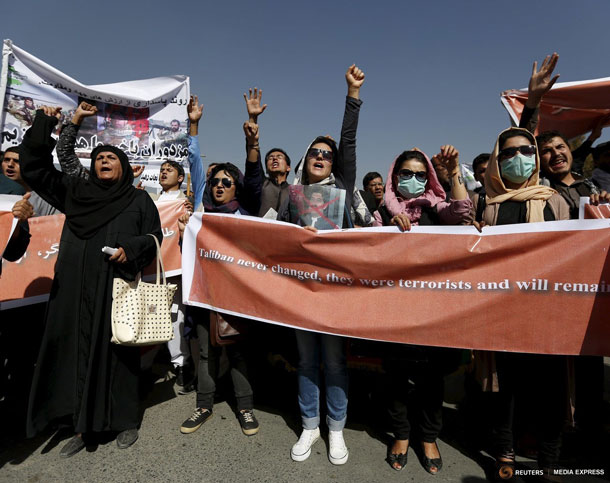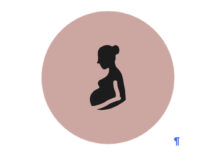
How have women’s lives in Afghanistan improved since 2001, from education and clothing to reproductive rights and political power?
By Sharon Kimathi
(Thomson Reuters Foundation) – With the Taliban back in power, fears are escalating that Afghan women will lose many of the freedoms they have won since 2001.
Here are six ways life has got better for women since the last Taliban government fell – gains now feared at risk:
EDUCATION
When the Taliban ruled Afghanistan from 1996 to 2001, they banned girls above the age of eight from receiving education.
The number of girls enroled in primary school in Afghanistan increased to 33% in 2017 from less than 10% in 2003, according to the World Bank, while their enrolment in secondary school was 39% in 2017, up from 6% in 2003.
Kabul University started teaching a master’s degree in gender and women’s studies in 2015.
WORK
The number of Afghan women who work increased to 22% in 2019 from 15% in 2001, according to the World Bank, with women opening businesses in everything from fashion and beauty to accountancy and electrical engineering.
Women were increasingly visible in all sectors of society, including journalism, healthcare and law enforcement.
Since the Taliban took over Kabul on Sunday, workers have removed images of women from the fronts of shops and salons. Under the last Taliban regime, women were banned from employment and thousands lost their jobs.
Taliban spokesperson Zabihullah Mujahid has said that women will be allowed to work “within the framework of Islam” under the new regime.
When the Taliban took over the southern city of Kandahar in July, fighters ordered nine women working in Azizi Bank to leave, telling them that male relatives could take their place, three of the women said.
CLOTHING
Under the first Taliban regime, women had to wear a burqa – a one-piece veil over the face and body with a mesh screen to see through – and be accompanied by a male relative outside their homes.
While the burqa was worn prior to the Taliban, it was not mandatory.
With the group seeking to present a more moderate face now that it is back in power, it has said that women will wear the hijab. Hijabs usually cover the head and hair but allow the face to be seen.
LEGAL RIGHTS
In 2009, the Afghan government passed the Elimination of Violence against Women law, which outlawed 22 abuses against women, including rape, battery and forced marriage, and established special courts with female judges.
But its implementation has been patchy, often leaving rural Afghan girls and women behind.
Ireland’s U.N. Ambassador Geraldine Byrne Nason this week warned of “multiple and credible reports of summary executions, forced marriage and of sexual and gender-based violence.”
REPRODUCTIVE RIGHTS
In the first decade after the fall of the Taliban, the use of modern family planning methods doubled to 22% of couples, contributing to a fall in deaths in childbirth, according to the U.N. Population Fund (UNFPA).
Contraceptive use remains limited as many people prefer to have large families and women struggle to access basic health car, leading to one of the world’s highest maternal mortality rates.
As more than 75% of Afghanistan’s budget has been funded by international donors, according to Human Rights Watch, it is unclear what will happen to health services now.
POLITICAL POWER
Since 2001, women have played key roles in politics, with surgeon Suhaila Siddiq serving as health minister in 2001, Habiba Sarabi becoming the first female governor in 2005 and Zarifa Ghafari becoming the first female mayor in 2018.
In 2018, a record 417 women candidates contested seats across the country, deadly suicide attacks on election rallies apparently aimed at deterring voters.
Before the Taliban took over on Sunday, women held 27% of seats in the lower house of parliament, because of a constitquota – exceeding the global average of 25%, according to the Inter-Parliamentary Union.
Enamullah Samangani, a member of the Taliban’s cultural commission, on Tuesday urged women to join the new government.
“All sides should join,” he said in a television interview.
Reporting by Sharon Kimathi Editing by Lyndsay Griffiths and Katy Migiro. Credit the Thomson Reuters Foundation






